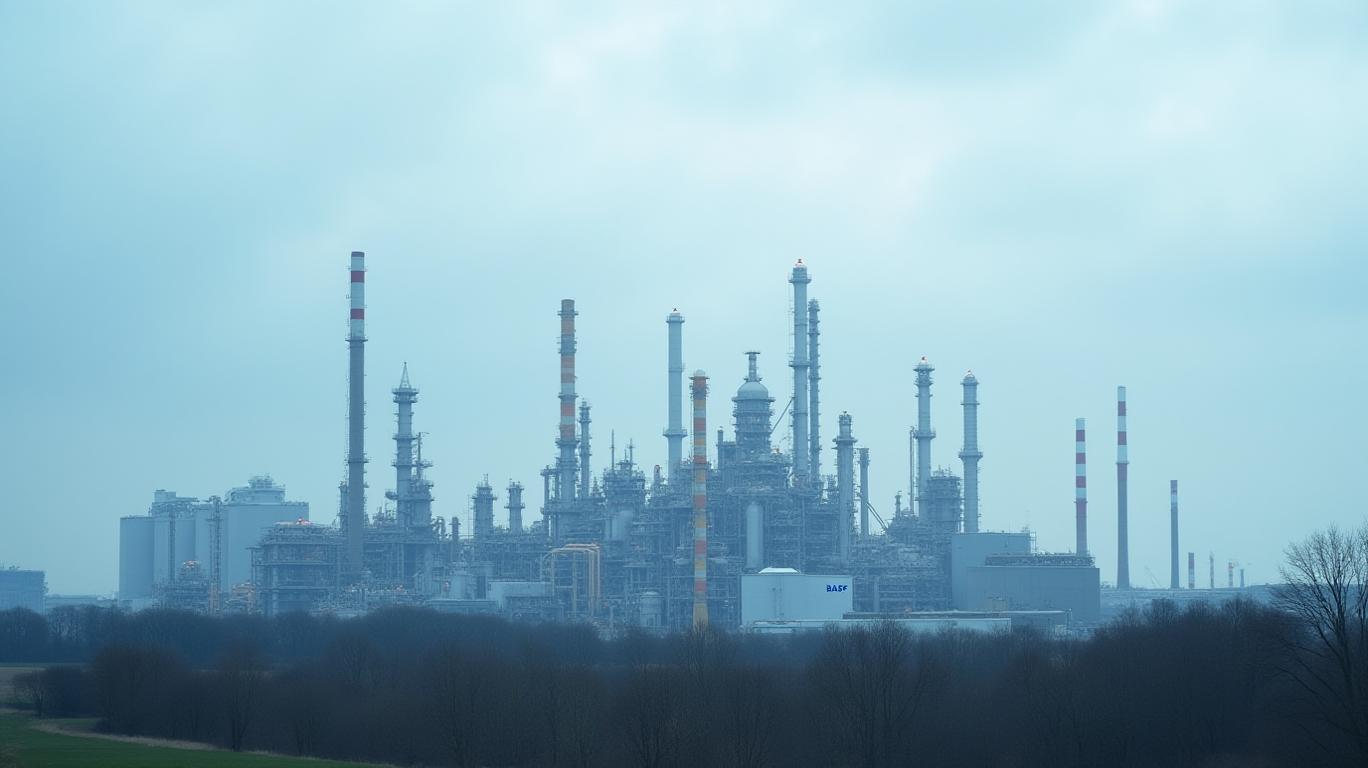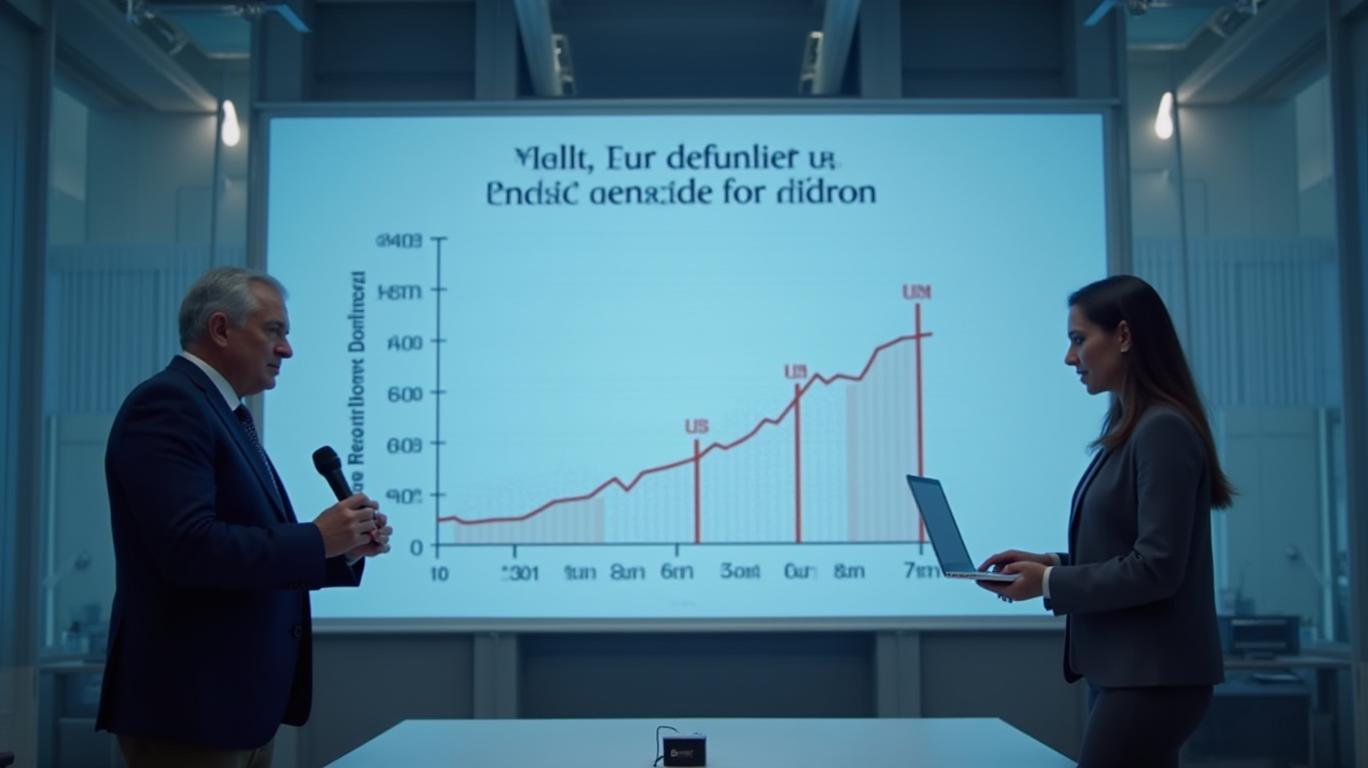BASF Holds Steady Amid Turbulence: Can 2025 Targets Survive the Storm?
BASF se has reaffirmed its 2025 financial targets despite a rocky start to 2025, marked by a sharp drop in net income and operational setbacks. The German chemical giant’s resilience hinges on a mix of strategic pivots, cost discipline, and a production model designed to insulate it from global trade tensions. But as headwinds from weak industrial demand and geopolitical risks persist, investors must weigh whether BASF can navigate this storm.

Confirmed Targets, Unconfirmed Clarity
BASF’s management remains unwavering in its 2025 goals, including a long-term target of €30 billion in operating cash flow by 2028 and shareholder returns fueled by asset sales. Its equity ratio of 45.9%—a robust indicator of financial stability—backs this confidence. Yet the first quarter of 2025 revealed cracks beneath the surface. Net income collapsed to €8 million, a €560 million year-over-year drop, driven by non-cash losses from wind farm divestitures and weaker equity stakes. Meanwhile, free cash flow turned negative at €1.8 billion, worsening from €1.5 billion in Q1 2024.
Regional Volatility and Operational Setbacks
Geographic disparities dominated Q1 results. North American volumes fell 9%, with Gulf Coast winter storms and sluggish automotive demand taking a toll. Contrast this with China, where volumes surged 7% due to pre-sold agricultural products and strong demand for fungicides and seeds. Europe saw modest growth (2%), but the real pain points were internal: a fire at its isophytol plant in Germany caused a “low triple-digit million euro” hit in 2025, delaying vitamin production recovery until mid-year.
Ask Aime: Can BASF's 2025 goals weather the current market downturn?
Strategic Defenses: Localized Production and Cost Cuts
BASF’s response to these challenges reflects a deliberate, two-pronged strategy. First, its “produce locally for local markets” model—ensuring 90% of U.S. sales come from domestic production—has shielded it from direct tariff impacts. CFO Dirk Elbermann emphasized this as a “key resilience factor” amid U.S.-China trade tensions. Second, cost-cutting is accelerating: the company aims to save €2.1 billion by year-end, with an extra €100 million targeted in 2025.
The company is also restructuring its portfolio. Proceeds from asset sales, such as the Decopain coatings business to Sherwin-Williams, will help reduce net debt, which stood at €20.4 billion as of Q1. Management has hinted at further divestments, including a potential IPO of its Agricultural Solutions division, to bolster balance sheet flexibility.
The Semiconductor Gambit
Perhaps the most intriguing move is BASF’s push into semiconductor materials. A “high double-digit million euro” investment in Ludwigshafen aims to produce specialty sulfuric acid for European chipmakers by 2027—a sector with strong growth prospects. This pivot underscores the company’s shift toward high-margin, capital-light opportunities.
The Bottom Line: Risks and Rewards
BASF’s stock, with a beta of 1.19, is moderately volatile but offers a 5% dividend yield—a rare comfort in today’s market. While near-term risks like weak automotive demand and raw material price swings linger, the company’s financial fortress (single-A credit ratings, disciplined capital allocation) provides a safety net.
The key question remains: Can BASF sustain its targets amid such turbulence? The equity ratio and cash flow trajectory suggest yes—if it can stabilize volumes in North America, execute its semiconductor bet, and avoid further operational shocks. For now, the path forward is clear, but the storm is far from over.
Conclusion
BASF’s Q1 stumble is a hiccup, not a crisis. With a 45.9% equity ratio, confirmed credit ratings, and strategic moves like semiconductor investments, the company is positioned to weather near-term headwinds. The €30 billion operating cash flow target by 2028 appears achievable if cost-cutting and portfolio shifts deliver as promised. Investors should monitor free cash flow recovery closely—Q1’s €1.8 billion deficit must improve by year-end to maintain credibility. For those willing to ride out volatility, BASF’s dividend yield and industrial dominance offer a compelling, albeit cautious, opportunity.


_cbf77e8c1748017079428.jpeg)






